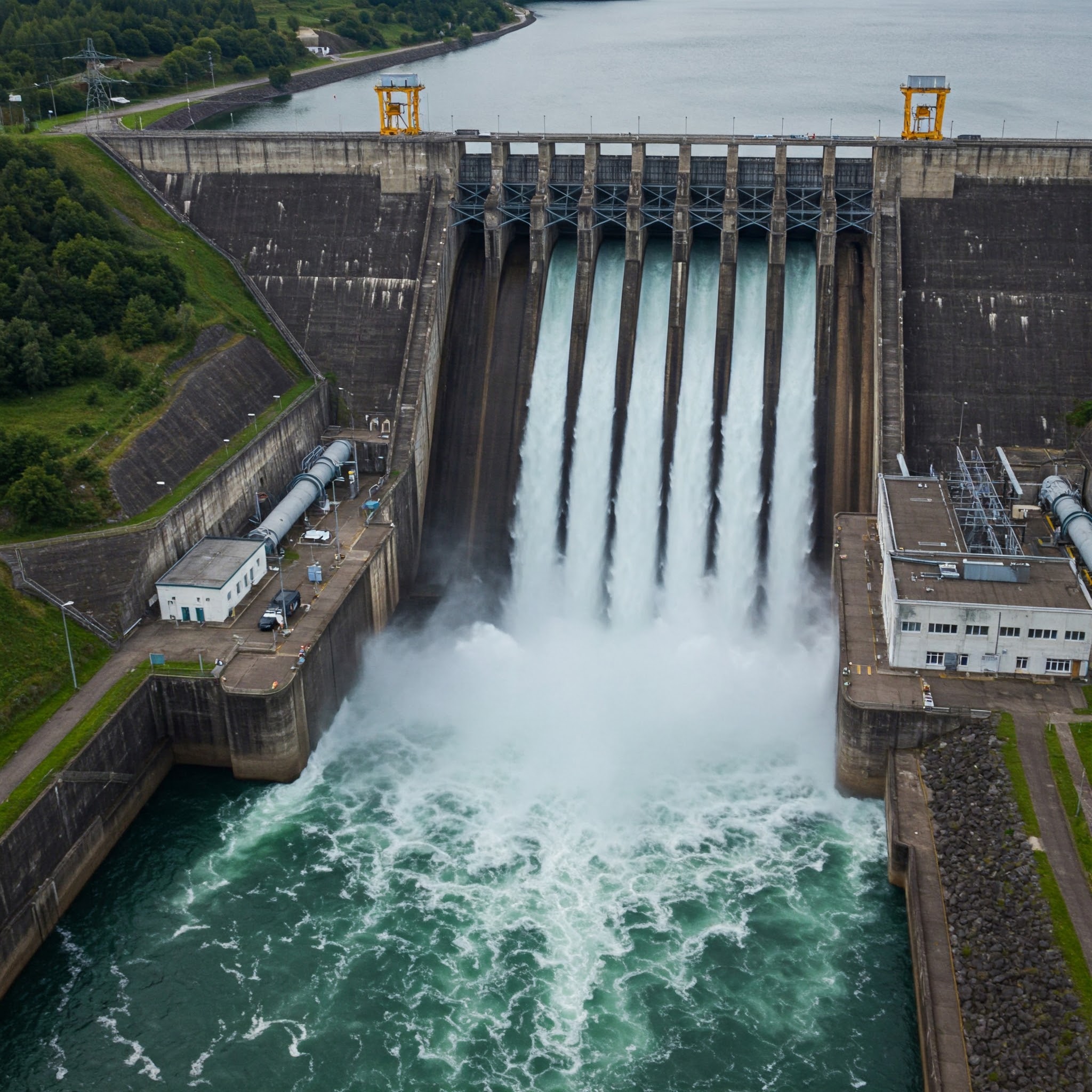Hydraulic Energy
Hydraulic Energy Formula |
||
|
\( E_h \;=\; P_h \cdot t \) (Hydraulic Energy) \( P_h \;=\; \dfrac{ E_h }{ t }\) \( t \;=\; \dfrac{ E_h }{ P_h }\) |
||
| Symbol | English | Metric |
| \( E_h \) = Hydraulic Energy | \(lbf-ft\) | \(J\) |
| \( P_h \) = Hydraulic Power | \(lbm-ft^2 \;/\; sec\) | \(kg-m^2 \;/\; s\) |
| \( t \) = Time | \(sec\) | \(s\) |
 Hydraulic energy, abbreviated as \(E_h\), is the energy derived from the movement and pressure of fluids, typically water. It is harnessed and converted into mechanical or electrical energy using various hydraulic systems and technologies. Hydraulic energy is commonly used in engineering and industrial applications, as well as for power generation and transportation.
Hydraulic energy, abbreviated as \(E_h\), is the energy derived from the movement and pressure of fluids, typically water. It is harnessed and converted into mechanical or electrical energy using various hydraulic systems and technologies. Hydraulic energy is commonly used in engineering and industrial applications, as well as for power generation and transportation.
Key Points about Hydraulic Energy
Fluid Motion - Hydraulic energy is generated when fluids are forced to flow through pipes, channels, or other conduits. The movement of the fluid is harnessed to perform useful work.
Pressure - Hydraulic systems often rely on the pressure created by the fluid to transmit force and energy. Pressure is generated by the confinement of the fluid within closed systems or by pumps that pressurize the fluid.
Conversion - Hydraulic energy can be converted into mechanical energy by using hydraulic actuators, which are devices that use the pressure of the fluid to create mechanical motion or force. It can also be converted into electrical energy through hydraulic turbines connected to generators.
Applications of Hydraulic Energy
Hydraulic Machinery - Hydraulic systems are used in various industrial machinery, including cranes, excavators, bulldozers, and hydraulic presses. These machines use pressurized fluids to perform heavy lifting, pushing, and precise movements.
Power Generation - Hydraulic energy is used in hydropower plants to generate electricity. Water flowing through turbines converts the energy of the moving water into mechanical energy, which is then converted into electrical energy using generators.
Transportation - Hydraulic systems are employed in vehicles for functions such as braking, power steering, and suspension. In aircraft, hydraulic systems are used for landing gear deployment and control surfaces.
Construction - Hydraulic systems are crucial in construction equipment like backhoes, loaders, and cranes for their power and precision.
Manufacturing - Hydraulic systems are used in manufacturing processes to shape, form, and press materials.
One important principle related to hydraulic energy is Pascal's law, which states that a change in pressure applied to an enclosed fluid is transmitted undiminished to all portions of the fluid and to the walls of its container.

